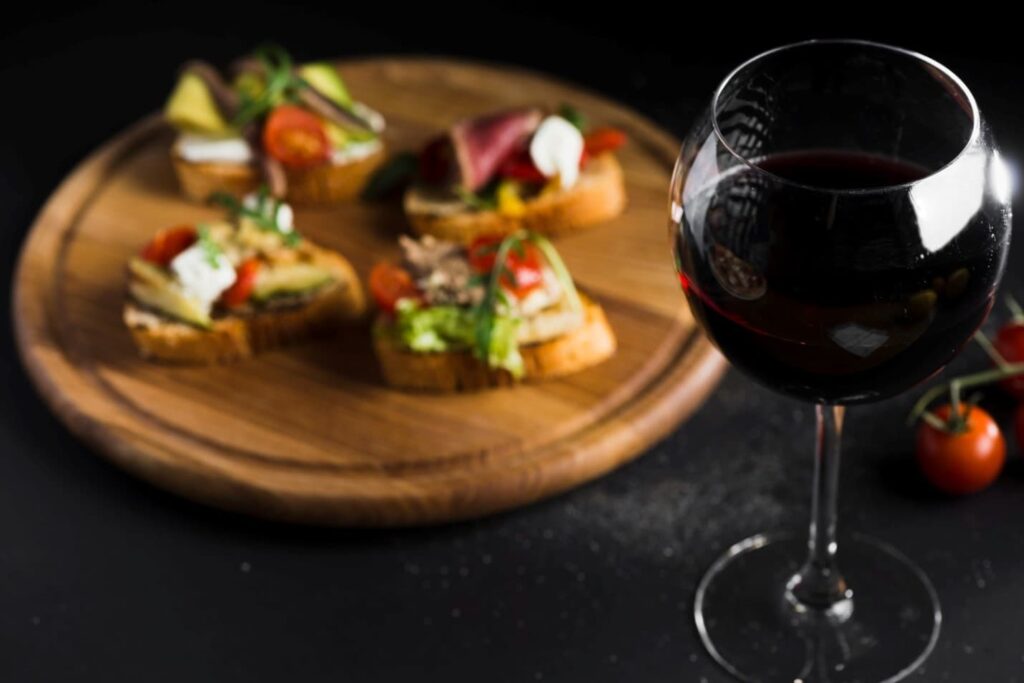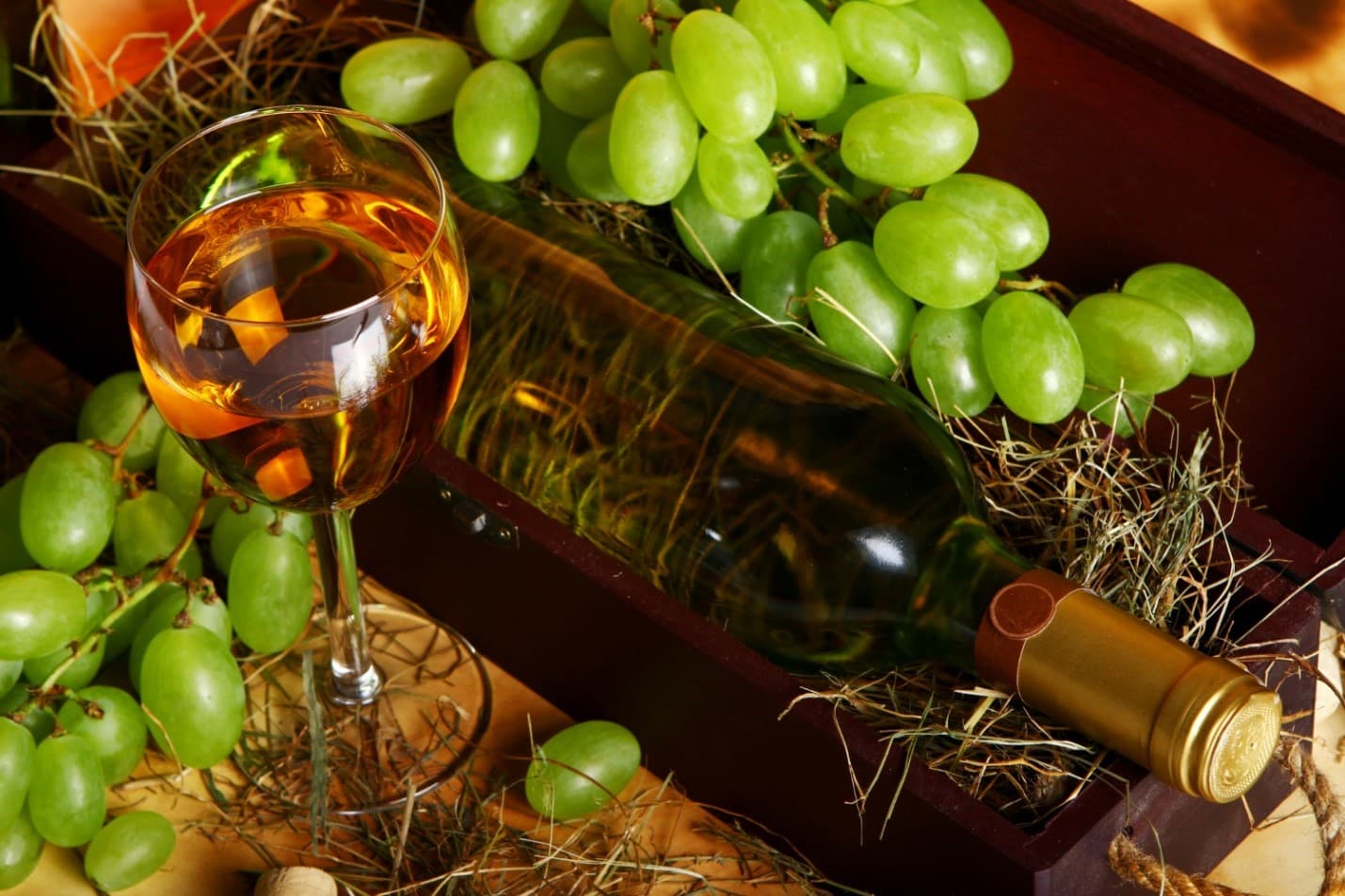Pairing Wine and Food: A Beginner’s Guide
Wine has played a crucial role in dining traditions for centuries, and the art of pairing it with food adds a delightful dimension to the gastronomic journey. Whether you consider yourself a seasoned enthusiast or a newcomer to wine, grasping the fundamental aspects of pairing can elevate your dining pleasure. This guide, designed with beginners in mind, provides valuable insights into the fundamental principles of achieving harmony between types of wine and food.
Understanding the Basics
A foundational principle in the art of combining wine and food involves achieving a harmonious balance between the dish’s flavors and the wine’s characteristics. It involves thoughtful consideration of the weight and intensity of both components. Lighter wines tend to harmonize with more delicate dishes, whereas bolder wines find affinity with heartier and more flavorful foods.
The acidity of the wine and the food should be considered. Wines with elevated acidity, such as Sauvignon Blanc or Pinot Noir, can cut through the richness of fatty dishes, offering a refreshing contrast. Conversely, wines with lower acidity may find a better match with dishes with a higher acidity level, ensuring a balance preventing one from overshadowing the other.
Wine with Different Types of Food
White Wines
This refreshing and vibrant white wine harmonizes exceptionally well with lighter fare, including salads, seafood, and herbal or citrusy dishes. The Sauvignon Blanc’s acidity perfectly complements the freshness of these foods, resulting in a delightful and well-balanced combination.
Chardonnay, known for its versatility, proves to be a suitable companion for a variety of dishes. Unoaked Chardonnays complement lighter fare such as grilled chicken or pasta, whereas oaked Chardonnays enhance the flavors of richer dishes like lobster or creamy sauces.
Red Wines
Celebrated for its light to medium body, Pinot Noir is an excellent choice for dishes like roasted poultry, grilled salmon, or earthy flavors like mushrooms. Its well-balanced acidity and subtle tannins contribute to a harmonious pairing, allowing it to complement a variety of foods without overpowering their flavors.
On the other hand, Cabernet Sauvignon, a robust red wine, establishes a remarkable pairing with substantial dishes like grilled steak or lamb and those with intense flavors and rich sauces. The wine’s tannins are crucial in cutting through the meat’s richness, resulting in a well-balanced and satisfying combination.
Rosé Wines
Rosé wines, known for their versatile profile, harmonize effortlessly with diverse foods. They prove especially fitting for picnics, light appetizers, and dishes infused with a hint of spice. The refreshing and crisp characteristics of rosé complement a wide variety of flavors.

Common Pairing Mistakes to Avoid
Mismatching the wine’s intensity with the dish’s intensity is a common mistake. Light-bodied wines risk being overshadowed by robust and flavorful dishes, whereas bold wines have the potential to overwhelm delicate flavors. Achieving a balance in the intensity of wine and food is key to a harmonious pairing.
When choosing wines for desserts or spicy dishes, it’s crucial to assess sweetness levels carefully. Sweeter wine varieties such as Riesling or Moscato can skillfully balance the heat in spicy dishes. In contrast, dessert wines complement the sweetness of desserts without overwhelming them with excessive sugary notes.
While following general guidelines can provide valuable insights, it’s crucial not to overlook personal taste preferences. If you prefer a specific wine with a particular dish, enjoy it. Experimentation is the cornerstone of discovering your ideal pairings, and the thrill of finding what suits your palate is an integral and exciting aspect of the wine and food pairing journey.
Experimenting and Developing Your Palate
The world of wine and food pairings is not just about following strict guidelines; it’s a journey of personal discovery. As you embark on this adventure, consider the following unique tips to enhance your palate:
- Take a virtual tour worldwide by exploring regional wine and food pairings. Dive into the flavors of Italy with a Chianti paired with traditional pasta dishes, or savor the synergy of a Spanish Tempranillo with tapas. This approach allows you to appreciate the cultural nuances that influence these pairings.
- Mixing traditional “Old World” wines with more contemporary “New World” counterparts can provide an exciting tasting experience. Compare a classic Bordeaux with a bold California Cabernet Sauvignon, noting the differences in winemaking styles and how they interact with various dishes.
- Extend your considerations beyond flavor and contemplate the texture and mouthfeel when pairing wine with food. Creamy dishes, for example, might discover a perfect companion in an oaked Chardonnay, while the enthusiasm of sparkling wine can introduce a playful element to light appetizers. Aligning the tactile qualities of the wine and the dish contributes to an enriched and more immersive dining experience.
- Gather friends or family for a wine and food pairing evening. Each participant can bring a bottle and a dish, fostering a collaborative environment to share insights and preferences. This interactive setting expands your knowledge and provides a social context to enjoy the pleasures of wine and food.
- Keep a wine and food journal to meticulously document your pairing experiments. Record the wines you taste, the dishes you pair them with, and your impressions. This practice will gradually construct a personalized guide tailored to your taste preferences, empowering you to make more informed choices in the future based on your evolving palate.
- Take advantage of local wine tastings and workshops. Many wineries and wine shops offer events where you can sample different varietals alongside complementary foods. These experiences often provide valuable insights from experts and fellow enthusiasts, expanding your understanding of pairing dynamics.
- Challenge your palate by pairing wine with unconventional or unexpected foods. Embark on flavor adventures by trying unconventional pairings like a spicy Shiraz with barbecue, a dry Riesling with sushi, or a sparkling wine with popcorn. Exploring these unusual combinations can yield delightful surprises, expanding your appreciation for different wines’ diverse and versatile nature.
- Pause to savor the aromas of both the wine and the food. Concentrating on their aromatic qualities can heighten the overall sensory experience. Consider how a floral Viognier, for instance, might harmonize with the fragrant spices in an Asian dish, creating a symphony of scents on your palate.
The skill of pairing wine and food is an approachable endeavor that can markedly enrich your dining experience, regardless of your level of wine expertise. Armed with a solid understanding of fundamental principles, such as balanced acidity and a recognition of the characteristics of different wines, you can adeptly create delightful combinations, taking your meals to a heightened level of enjoyment. Remember, there are no strict rules—allow your taste buds to guide you on a delicious journey of discovery. Cheers!
